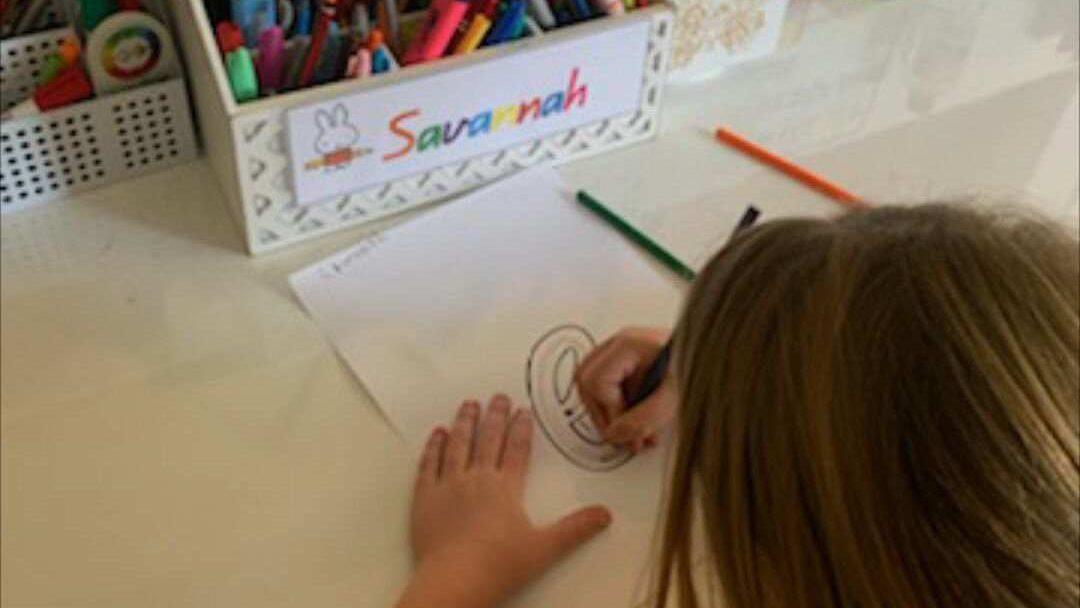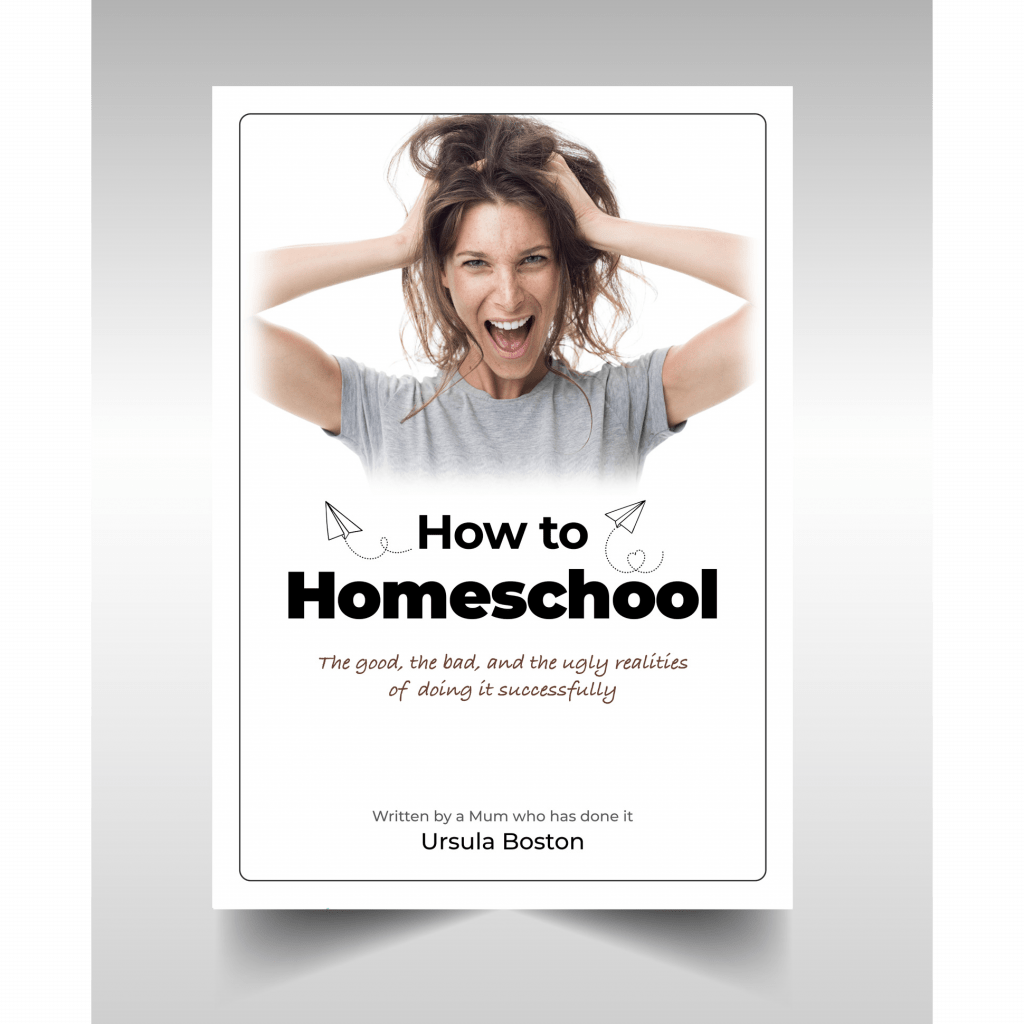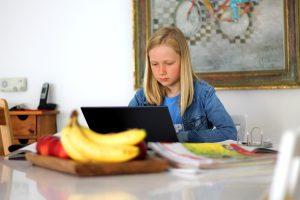Homeschooling your preschooler might seem like a daunting task, but with the right guidance and resources, it can become an enriching journey for both you and your child.
Homeschooling allows us to ignite our children’s love for learning in a way that is unique just for them.
Through this guide, we will provide you with the necessary tools to successfully homeschool your preschooler.
Understanding Preschool-Age Children
Play isn’t just fun for preschoolers – it’s their primary mode of learning.
The Importance of Play in Learning
Through play, children develop crucial skills such as problem-solving, creativity, and social interaction.
As Albert Einstein once said, “Play is the highest form of research.” So, let your child explore, create, and learn through play!
Typically, children learn more and thrive better when they are curious. And they become curious thinkers through play.
And one of the most powerful ways to cultivate this is through our own parental modelling.
Be Playful…Be daring…Be adventurous…Be creative…Be curious.
Ignite your child’s passion for learning by leading the way. Allow time for creative play, imaginative play, physical play, social play and free play.
Encourage questions with your child, explore your surroundings together and display gratitude for the simple things. This is what matters most in teaching your child to love learning
Developmental Milestones for Preschoolers
Keep milestones in mind, but remember that every child develops at their own pace in their own race. They are not to be compared.
In general, parents tend to want to push the educational milestones on their kids at an earlier age. They want their children to be little geniuses. They want them to be able to recite the alphabet, write and recognise their own name, be able to count to the tens, all before entering pre-school.
Most often the motive or intention behind this is a competition to measure against other children, to ensure they are not the ” bottom of the class ” so to speak.
Typically this is done through tedious repetition, which as we all know as adults is certainly not a fun way to learn anything.
I believe the most important focus should be on teaching them how to learn, not what to learn.
Learning should be done with play. Evoke curiosity, ask questions, teach through music or rhyme, let them be physical and learn by working with the hands.
Don’t make learning so strict and tedious that they learn to dislike learning. Especially when they are placed under pressure to learn something fast because they want to move on to the next milestone.
If you can create a homeschool environment that is not reminiscent of a school classroom, I can assure you that they will love learning. It will come naturally.

Setting Up Your Homeschool Environment
Sometimes it is necessary to have a dedicated space for learning to help your child focus on their activities.
Creating a Learning-Friendly Space
This doesn’t necessarily mean a separate room – a small table in a quiet corner of the living room can work just as well. Even a nice spot in the garden.
The space need not be bright and colourful. It has always been thought that a learning space ie a classroom needs to be bright and colourful with posters and educational materials to stimulate your child’s brain into learning mode.
I believe the opposite.
Sometimes overstimulation creates distraction and prevents the child’s mind from fully absorbing what is happening in the present moment.
Creating an environment that is not over-cluttered, where colours are muted and noise that is not loud or overstimulating but instead calming. This nurtures learning.
A space with a sense of calm allows room in their precious minds for creativity and curiosity.
To create this style of space try these tips
- Use containers for storing pencils, books etc that are made from natural materials like timber or cardboard boxes, and woven fabric baskets. Vary the sizes and textures to create interest.
- Make or buy resources that are muted in colours. Softer tones. Not everything the bright primary colours.
- Rather than display creative paper artwork ( drawings, paintings, worksheets etc) everywhere, compile it into folders with plastic sleeves, that can be admired at leisure. Just display minimal in the learning space.
- Add some fresh garden greenery to the space. A potted plant or a posy of flowers & leafy stems in a jar
- Try adding some nice essential oils to stimulate or create calm in the room.
- Make it comfortable with cushions or pillows.
- Ensure the light is not too bright unless it’s natural sunlight.
Choosing the Right Tools and Materials
Parents often want to know” what is the BEST that money can buy” or that they can afford.
My advice is to take a close look at what is already in the home that can be utilized first. You will be surprised.
Then parents can choose and purchase additional materials that are age-appropriate and engaging for their child.
Collecting resources from the garden or in nature is a great place to begin. Rocks or stones for counters, Leaves to write numbers or letters on in crayons, and Shells from the beach to count and decorate.
Not everything needs to be purchased specifically for learning. Think creatively.
Often things we already have in our homes are the perfect tools for learning
- Pasta shells are great for counters and grouping
- Household board games are extremely valuable – monopoly, scrabble, uno cards.
- measuring spoons & cups
- screws & bolts from the toolbox
The list is endless
And remember – Life itself is a lesson. So with this in mind take the moment to use everyday opportunities to teach the basic milestones.
- Have the child count the place settings at the table
- count the cups of flour needed in the cake mix
- Sort make-up and lipsticks into colour groups
- Label a different item of furniture around the house that they can recognise every week. And sound out the first letter of the word when it is used.
- Write the letters of their name in a tray of flour or sand as a play activity
- sort containers into shapes, sizes & colours
Then, after the home and garden have been scrutinized, purchase or source additional resources like picture books, puzzles, craft supplies and worksheets.
In addition, some online platforms like ABCMouse and Khan Academy Kids offer interactive learning activities. Investigate some age-appropriate sites and use your discretion as to what you feel is suitable for your child.
And if you are looking for inspiration check out Instagram homeschooling for some amazing blogs. Two of my many favourites are # 1000 hours outside and # raising little shoots

Developing a Homeschooling Schedule
Balancing Structured and Free Time Play
While some structure is beneficial, remember that preschoolers learn best through free play and exploration. A good rule of thumb is to follow a 1:2 ratio of structured learning to free play.
Try to keep the structure to a maximum of 10 minutes at a time. Any more than this and generally the child will lose interest and be unable to maintain focus.
The exception to this sometimes is if it’s on an iPad or computer then some are more likely to hold attention longer.
Free play is nature’s way of allowing children to discover the things they love to do in their way.
This means that they need not have our interference to verbally teach them how to play. They will learn themselves – how to problem solve or create their own rules of play and discovery.
Essentially they are FREE to play and let imagination run wild all whilst in a safe environment.
Incorporating Breaks and Physical Activity
Physical activities are vital for the development of young children. Simple physical activities like dancing to music, outdoor ball play, tree climbing or running around at the playground can easily be scheduled into your child’s daily routine.
Variety is a key component of enjoyment for them and it also stimulates curiosity.
Some of the physical play may be vigorous other types may be more gentle movement. Either way, it teaches them:
- to learn how to control their bodies and their emotions whilst participating. Things like overcoming fear or embarrassment
- and they learn to control body parts with balance and coordination.
Any sort of physical play ( provided it is safe) is beneficial.
It’s also important to be mindful of the food and snacks that are offered that can either help or hinder a child’s behaviour and ability to learn.
Scarce with the Sugar and Pack in the Protein.
As a rule – Breaks do not need to be at a set time every day to keep a routine. If you notice rapidly changing behaviour in your child perhaps they are thirsty or hungry. Especially if they have had lots of robust physical play.
Choosing a Homeschooling Curriculum
Understanding Different Preschool Curriculums
There are various preschool curriculums available, from Montessori to Waldorf to Reggio Emilia. Research each approach and choose what resonates with your family’s values, your lifestyle and your child’s learning style.
Adapting Curriculum to Your Child’s Needs
Every child is unique, and so is their learning journey. Don’t be afraid to modify the curriculum to suit your child’s interests and pace.
For instance, if your child loves animals, incorporate more animal-themed activities into your lessons.
Once again remember to keep it simple but keep it interesting, evoke curiosity and nurture enthusiasm.
Practical Teaching Strategies for Preschoolers
Using Games and Hands-On Activities
Games make learning fun and memorable. Try playing number bingo, alphabet memory, or shape-sorting games. Hands-on activities like gardening or cooking also offer great learning opportunities within the home.
Incorporating Storytelling and Creative Play
Storytelling sparks imagination and improves language skills. Make up stories together, act them out with puppets, or create storybooks.
Creative play, building blocks and dress-up games are great ways to foster problem-solving and enhance social skills.
Sometimes the ordinary tasks hold the most glorious wonder. Help the child find the extraordinary in the ordinary. Show them the joy of kneading dough to make pizza to eat at dinner, and the sadness when a pet dies.
Again always remember that we are the best role models for learning.
FAQs for Homeschooling Preschoolers
Included are some answers to common questions about homeschooling preschoolers.
- When should I start homeschooling my preschooler?
- While there’s no definitive age to start homeschooling, many parents begin around ages 3 to 4. However, it largely depends on your child’s readiness and your family’s circumstances.
- What curriculum should I use for homeschooling my preschooler?
- There are numerous curriculums available, each with its own teaching philosophies. Montessori, Waldorf, and Reggio Emilia are a few examples. Choose one that aligns with your educational goals and your child’s learning style.
- How can I ensure my homeschooled preschooler gets enough social interaction?
- Socialization can be achieved through various means such as playdates, community events, classes, or local homeschooling groups.
- How much time should I spend each day on homeschooling activities?
- For preschoolers, short and engaging sessions work best. Many experts suggest a mix of structured and unstructured activities, with an emphasis on play-based learning.
- How can I prepare my homeschooled preschooler for kindergarten?
- Focus on building foundational skills like recognizing letters and numbers, basic counting, and fine motor skills. It also, fosters independence, curiosity, and social skills.
- What if my child doesn’t want to participate in the homeschooling activities?
- Try to make learning fun through games, crafts, and hands-on activities. Follow your child’s interests and allow for flexibility in your schedule.
- What resources are available for homeschooling preschoolers?
- Books, online platforms, educational toys, and local homeschooling groups can provide valuable resources and support for homeschooling families.
Final Thoughts
Homeschooling your preschooler is a rewarding endeavour that deepens the parent-child bond and provides personalized education.
With patience, preparation, and the right resources, you’ll be well-equipped to give your child a wonderful start to their learning journey. And remember, the goal isn’t to create a mini-genius but to nurture a lifelong learner. Happy homeschooling!
With love and kindness
Ursula x
For a limited time – I’m offering massive discounts for any first-time purchase. Use code ( first20off ) at checkout.

How to Homeschool – The Good the Bad and the Ugly Realities of Doing it Successfully
This is the book I wrote to my younger self about doing it successfully. Take it from someone who has been there.
It is everything I have learned from my 18 years as a full-time educator, mum, and housewife.
It is everything you need to get started.

About The Author
My name is Ursula Boston. I’ve been educating my daughters as a proud homeschool mum for nearly 20 years. Alongside managing our household and small business from home.
If you want to learn how to do this from someone who has actually done it. Twice! I will show you HOW.







